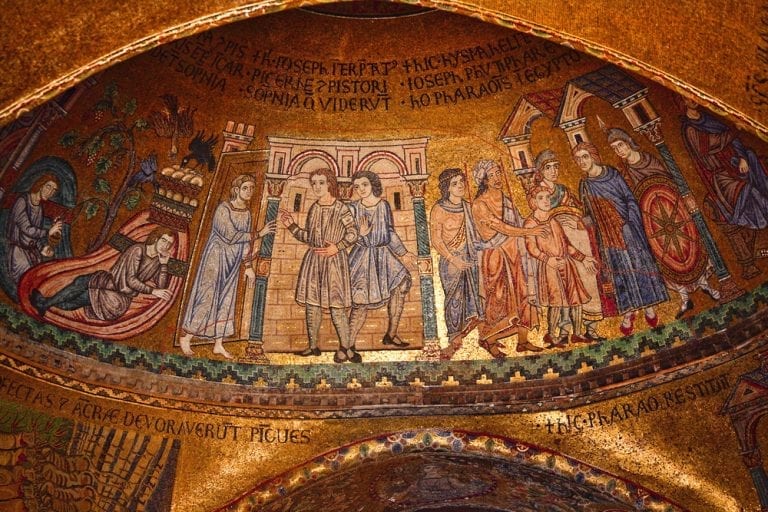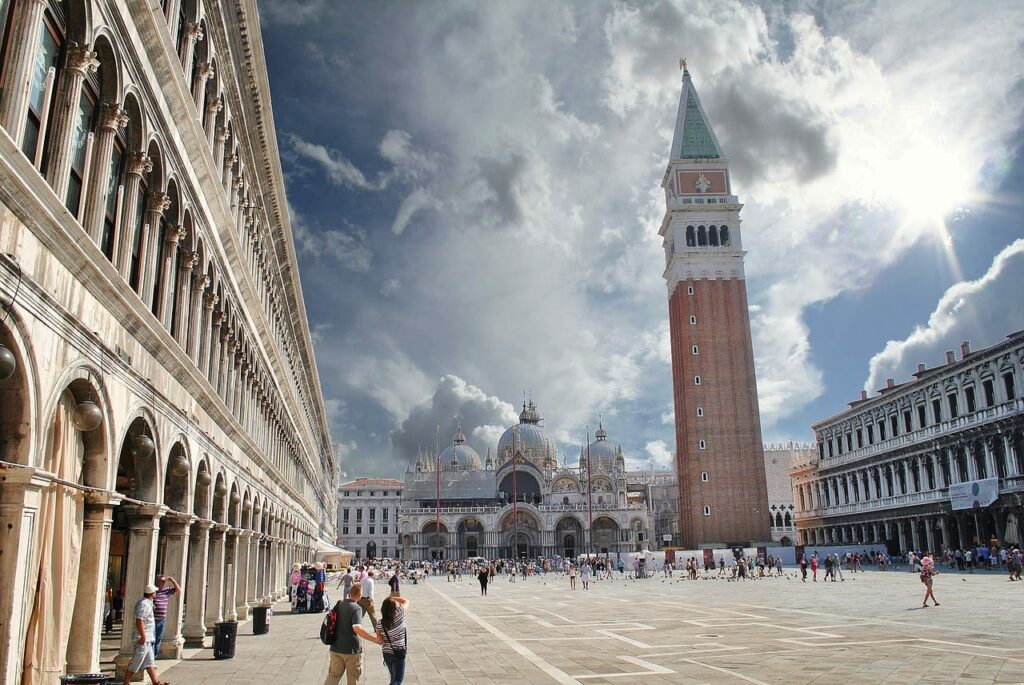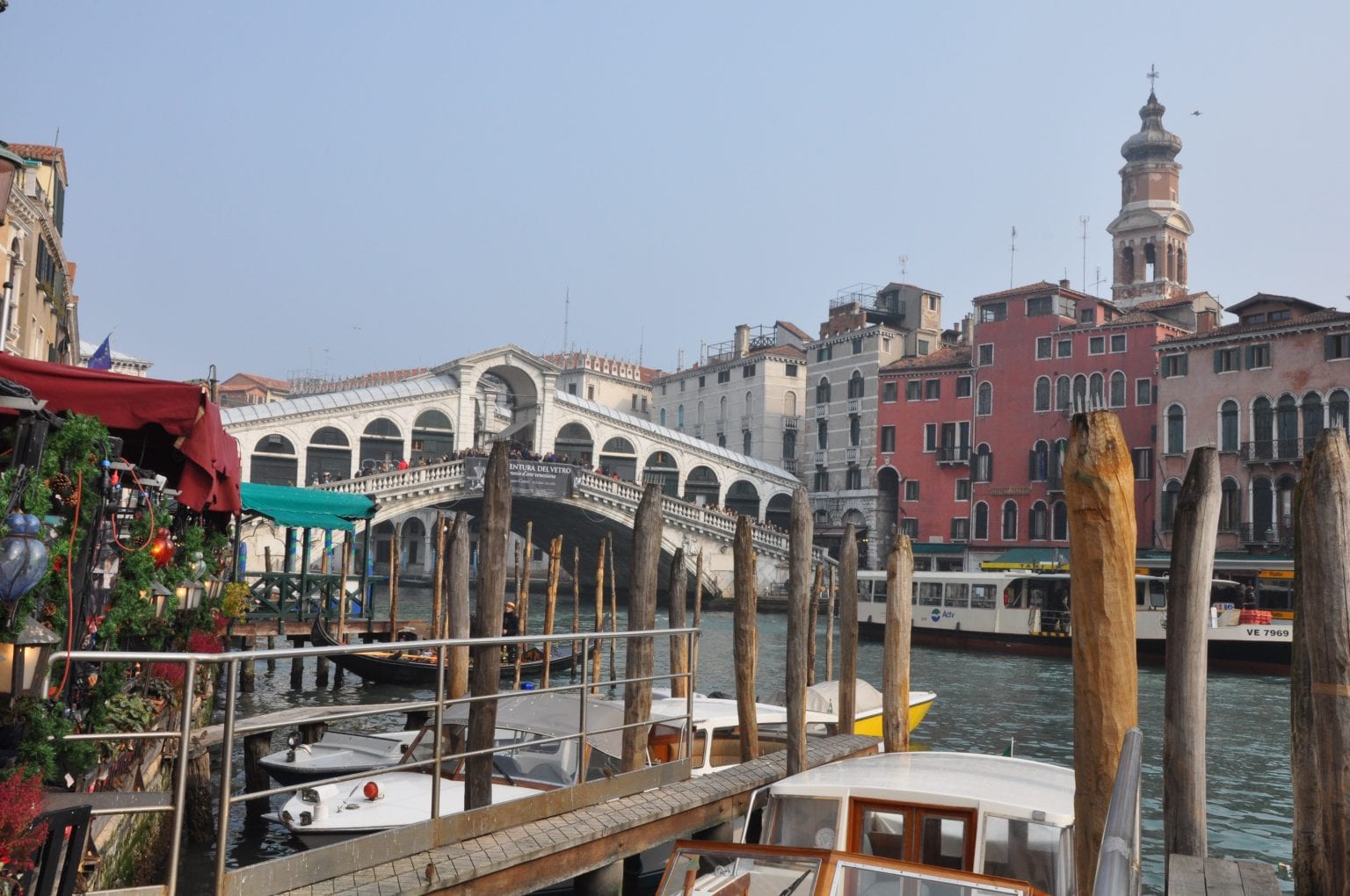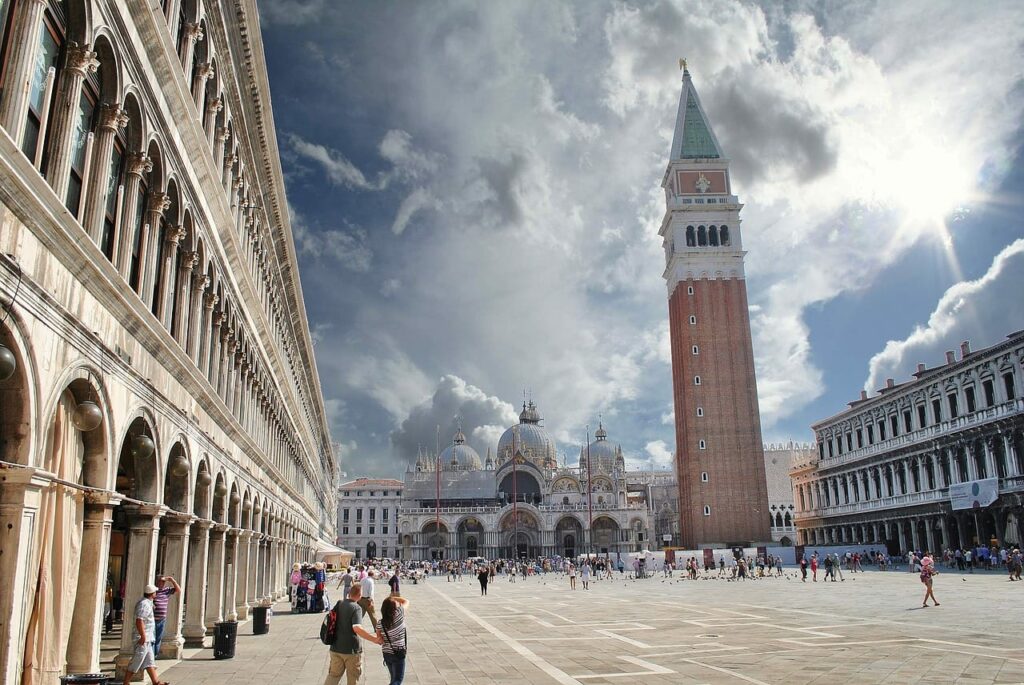استمر في الاستكشاف
البندقية، إيطاليا
وجهات أساسية في البندقية
إكتشف المزيد
تعد كاتدرائية القديس مرقس واحدة من أكثر المعالم السياحية زيارة في البندقية ، ويجب مشاهدتها في خط سير الرحلة إلى إيطاليا لأي مسافر! ولكن مع تاريخ يمتد إلى القرن 9th م ، فهي أيضا كنيسة بها الكثير من القصص والأساطير المثيرة للاهتمام وراءها. فيما يلي ستة من أروع الحقائق عن كاتدرائية القديس مرقس!
1 بدأت البازيليكا بقصة اختطاف متهورة
 الأول كنيسة القديس مرقس تم بناؤه على هذه البقعة في القرن 9th لإيواء الآثار المقدسة للغاية - الآثار التي سرقت! في عام 828 ، سرق تجار من البندقية جسد القديس مرقس الإنجيلي ، أحد الرسل الأربعة ، من الإسكندرية ، مصر. وفقا للأسطورة ، تسللوا إليهم عبر الحراس (المسلمين) عن طريق إخفائهم تحت طبقات من لحم الخنزير في براميل!
الأول كنيسة القديس مرقس تم بناؤه على هذه البقعة في القرن 9th لإيواء الآثار المقدسة للغاية - الآثار التي سرقت! في عام 828 ، سرق تجار من البندقية جسد القديس مرقس الإنجيلي ، أحد الرسل الأربعة ، من الإسكندرية ، مصر. وفقا للأسطورة ، تسللوا إليهم عبر الحراس (المسلمين) عن طريق إخفائهم تحت طبقات من لحم الخنزير في براميل!
أثناء وجوده في البحر ، كادت عاصفة أن تغرق لصوص القبور وحمولتهم الثمينة ، ويقال إن القديس مرقس نفسه ظهر للقبطان وطلب منه خفض الأشرعة. تم إنقاذ السفينة ، وقال التجار إنهم مدينون بسلامتهم للمعجزة.
تم تصوير القصة بأكملها على فسيفساء القرن 13th فوق الباب الأيسر عند دخولك الكنيسة.
2 هناك ما يكفي من الفسيفساء لتغطية 1.5 ملاعب كرة قدم أمريكية!
There are more than 85,000 square feet (or 8,000 square meters) of mosaic in St. Mark’s Basilica… or enough mosaic to cover over 1.5 American football fields! The mosaics were done over 8 centuries, mostly in gold, and the result is astonishing. Enter the basilica at different times of day to see how the light makes the colors and scenes, look different.


3 هناك أكثر من 500 عمود
مجرد مثال آخر على الحجم الهائل ، وكمية الأشياء المدهشة ، في كاتدرائية القديس مرقس هو عدد الأعمدة. هناك أكثر من 500 عمود وعواصم في البازيليكا ، ومعظمها بيزنطية ، يعود تاريخها إلى ما بين القرنين 6 و 11. يتم خلط بعض العواصم الكلاسيكية ، من القرن 3rd أيضا!

4 الكثير من كنوز البازيليكا جاءت من الحروب الصليبية ومن القسطنطينية
أعطت الحملة الصليبية الرابعة ، على وجه الخصوص ، كاتدرائية القديس مرقس مكاسب غير متوقعة. بعد كل شيء ، كانت هذه هي الحملة الصليبية التي انتهت ، في عام 1204 ، بغزو القسطنطينية (اسطنبول الحديثة).
The result? A lot of treasure was shipped to Venice, and installed in St. Mark’s Basilica — including the four bronze horses, an icon of the Madonna Nicopeia, enamels of the Golden Altar-piece, relics, crosses, chalices, and patens!

5 بالا دورو يضع جواهر التاج في العار
انس الأحجار الكريمة المتلألئة في برج لندن: العائلة المالكة ليس لديها شيء في كاتدرائية القديس مرقس! إن Pala d'Oro ، وهي شاشة مذبح بيزنطية من الذهب ، مرصعة بمئات الأحجار الكريمة - حرفيا. وهي تشمل 1300 لؤلؤة و 300 زمرد و 300 ياقوت و 400 عقيق و 100 جمشت بالإضافة إلى الياقوت والتوباز.
6 برج الجرس هذا؟ انهارت مرة واحدة

يعود تاريخ كامبانيل سانت مارك الذي يبلغ ارتفاعه 323 قدما (98.6 مترا) إلى القرن 9 ... ولكن كان لا بد من إعادة بنائه في عام 1903. السبب؟ انهارت! وقد أعيد صياغتها في القرن 16th ، ويبدو أنها ليست على ما يرام.
انهارت في 14 يوليو 1902. (لكي نكون منصفين ، فقد نجت من عدة زلازل قبل ذلك!). على الرغم من أنها دفنت شرفة الكنيسة تحت الأنقاض ، لحسن الحظ ، تم إنقاذ الكنيسة نفسها. لكن الحادث كان محرجا بما فيه الكفاية!
من عام 1903 إلى عام 1912 ، أعيد بناء برج الجرس تماما كما كان ... إلا مع تقنيات أفضل وأكثر أمانا.
حسنا ، لقد ذكرنا ستة ، ولكن نظرا لأننا في لفة ، فإليك المزيد من الأفكار الرائعة:
- القطع الذهبية للفسيفساء داخل كاتدرائية القديس مرقس مصنوعة من الذهب الحقيقي!
Venice was in the past a very wealthy city of merchants: what the Republic lacked in military strength or in land domination, it had in riches. The basilica’s mosaics are not just a way to please God and St. Mark or to communicate complex religious concepts, they were also a way to show the wealth of the city to important guests, like kings or ambassadors from other countries.
القطع الذهبية مصنوعة في الواقع من الذهب: كل واحدة لها ورقة ذهبية رقيقة "محصورة" بين طبقتين من الزجاج الشفاف. مع مثل هذا العرض للمواد الثمينة ، يمكن للبنادقة أن يظهروا في نفس الوقت تفانيهم الكبير ولكن أيضا "وزنهم" السياسي: شيء مهم للغاية لمثل هذا البلد الصغير.
- القباب الخارجية الكبيرة فوق البازيليكا مزيفة بالفعل!
In Venice, it’s impossible to build huge structures: the terrain is frail, so you have to carefully stick to small, light and flexible buildings. But the Venetians had to find a way to astonish their guests: so they optimized some very clever tricks to cheat the eye and give everyone the impression that the buildings are huge and imposing.
In St. Mark’s Basilica, there is a great example of this: the five big domes that give the building its distinctive shape are just a superstructure made of wood covered with a thin layer of lead. They are actually completely empty: the brick-built domes with the mosaics that you see inside the church are much lower.
We can arguably say that the only role of those big empty domes is to make the building look much bigger than it really is: this way the ships approaching the city could recognize its shape from afar, and be even more astonished by the legendary city rising from the waters.
- في عام 2019 ، غمرت "أكوا ألتا" كبيرة الكنيسة بالكامل!
In the Venetian Lagoon, there are tides: sometimes these tides go higher than normal and as a result, some parts of the city get flooded. St. Mark’s Square is the lowest part of the city, so it’s pretty common to see its floor partially or totally submerged in water.
But on November 12, 2019, things went completely out of control: the tide rose so high that it reached the second-highest level ever recorded in the history of the city. The custodians of the church were unprepared for this event: the water not only flooded the antechamber of the basilica, which is at the same level as the square but also the church itself, which is much higher.
The damage was substantial and the building is still recovering: at least this tragic event gave a big push to the completion of the MOSE project, a system of mobile barriers meant to protect the Lagoon from the most dangerous tides. The barriers were tested a couple of times in 2020 and apparently, they worked fine: we all hope they will be able to protect the basilica in the future.
- كنيسة القديس مرقس ليست أقدم كنيسة ولا أكبر كنيسة في البندقية!
The St. Mark’s Basilica was built starting from the IX century: but the history of Venice starts way before that moment, in the V-VI century. So there are churches around the city that predate the most important monument: according to historians, the oldest holy building of the city could be the church of San Giacometto, very close to the Rialto bridge. The Rialto area was, in fact, the first spot that was colonized when the islands started to be populated: the city of Venice was actually called “Rialto” for the first centuries.
Despite its enormous size, at least in proportion with the other buildings of the city, St. Mark’s Basilica is also not the biggest church: this title goes to the church of Santi Giovanni e Paolo, home to the very powerful Dominican monastic order. Their monastery was so big that when Napoleon conquered Venice he chose that building to become the first big public hospital in the city: and the hospital is there still today! You can learn more about San Giacometto and Santi Giovanni e Paolo if you take the Welcome to Venice tour or the Venice in a Day tour, which both feature these very important churches!

Special thanks go to our Walks of Italy guide Mosè Viero for sharing these additional interesting facts about St. Mark’s Basilica.
إذا كنت ترغب في معرفة المزيد ، تحقق من تجاربنا في البندقية لكل من كاتدرائية القديس مرقس وقصر دوجي - أو ، لزيارة كبار الشخصيات حقا ، قم بالوصول إلى كاتدرائية القديس مرقس بعد ساعات ، عندما تكون مغلقة أمام الجمهور!
استمر في الاستكشاف
البندقية، إيطاليا
وجهات أساسية في البندقية
إكتشف المزيد

